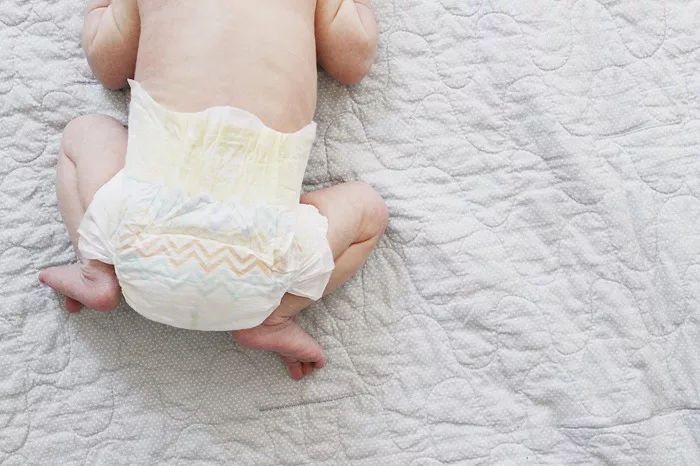Newborn care involves a myriad of responsibilities, and one of the primary concerns for new parents is managing diaper changes. An essential aspect of this is understanding how frequently a newborn should be changed and what constitutes normal versus concerning patterns. This article will explore the factors influencing diaper wetting, offer practical guidelines on daily diaper use, and provide insights into the health implications of various diaper-wetting patterns.
The Basics of Newborn Diapering
How Many Diapers Should a Newborn Use Daily?
In the early days of life, newborns have very specific needs and habits, particularly when it comes to urination. On average, newborns urinate approximately 6 to 8 times a day. This frequency can vary based on several factors, including the baby’s age, feeding patterns, and overall health.
Day-by-Day Diaper Use
First Few Days After Birth: Newborns may initially produce fewer wet diapers. In the first 24 to 48 hours, expect around 1 to 2 wet diapers per day. This low count is normal as the baby’s body adjusts to life outside the womb and the colostrum from breastfeeding, which is more concentrated and less hydrating than mature milk.
Transition to Mature Milk: As breastfeeding is established and the baby transitions from colostrum to mature milk, the frequency of diaper changes typically increases. By the end of the first week, most newborns will wet around 6 to 8 diapers daily. Formula-fed babies might have slightly different patterns due to the differences in their feeding regimen.
End of the First Month: By the time the baby is about one month old, the pattern generally stabilizes. Most newborns will continue to have 6 to 8 wet diapers per day, though some variation is normal. Factors like fluid intake, temperature, and health conditions can influence this number.
Factors Influencing Diaper Wetting Patterns
Several factors can affect how many diapers a newborn wets each day. These include:
Feeding Type:
Breastfeeding: Breast milk is high in water content, which usually results in more frequent urination. A well-fed breastfed baby is likely to have more wet diapers.
Formula Feeding: Formula-fed babies might have fewer wet diapers compared to breastfed infants, as formula is less hydrating than breast milk. However, their frequency should still fall within the 6 to 8 range if they are consuming an adequate amount.
Fluid Intake:
The amount of milk or formula a baby consumes directly impacts how often they will urinate. A well-hydrated baby will generally wet more diapers.
Health and Medical Conditions:
Certain conditions, such as dehydration, urinary tract infections, or metabolic disorders, can affect the frequency of urination. It’s crucial to monitor any significant changes in diaper wetting patterns and consult a pediatrician if needed.
Temperature and Environment:
Hot weather or high temperatures can influence fluid loss through sweating, potentially affecting the frequency of urination.
Recognizing Normal vs. Concerning Patterns
Normal Patterns:
Consistent Frequency: Most healthy newborns wet 6 to 8 diapers per day. This range is considered normal and indicates adequate hydration and healthy kidney function.
Clear or Light Yellow Urine: Healthy urine is typically pale yellow or clear. This color indicates proper hydration and is a positive sign.
Concerning Patterns:
Fewer Wet Diapers: If a baby consistently wets fewer than 6 diapers per day, it could signal dehydration or other health issues. Dehydration can result from insufficient feeding, illness, or a medical condition.
More Wet Diapers: While less common, a significant increase in diaper wetting could be due to overhydration or certain medical conditions. If accompanied by other symptoms, it may require a healthcare evaluation.
Dark Yellow or Concentrated Urine: Dark yellow or strong-smelling urine may indicate dehydration or other issues and should be monitored closely.
See also: The 6 Best Diapers for Sensitive Skin in 2024
Practical Tips for Managing Diaper Changes
Keep Track: Use a diaper diary or app to monitor the frequency of wet diapers. This can help track patterns and identify any changes that may need attention.
Ensure Proper Hydration: Ensure that your baby is feeding well and regularly. If you are breastfeeding, follow the baby’s cues and offer the breast often. For formula-fed babies, follow the recommended feeding guidelines.
Consult a Pediatrician: If you notice a significant change in your baby’s diaper wetting patterns, consult your pediatrician. They can offer guidance and check for any underlying issues.
Maintain Diaper Hygiene: Proper diaper hygiene is essential to prevent diaper rash and other skin issues. Change diapers frequently to keep the baby’s skin clean and dry.
Stay Informed: Keep up-to-date with the latest recommendations for newborn care and consult healthcare professionals if you have concerns.
Conclusion
Understanding how many diapers a newborn wets each day is an important aspect of newborn care. On average, newborns should wet 6 to 8 diapers daily, with variations based on feeding type, fluid intake, and health status. Monitoring diaper wetting patterns and recognizing normal versus concerning signs are crucial for ensuring your baby’s health and well-being. Regular communication with healthcare providers and proper management of feeding and diapering routines will help maintain your newborn’s hydration and overall health.


